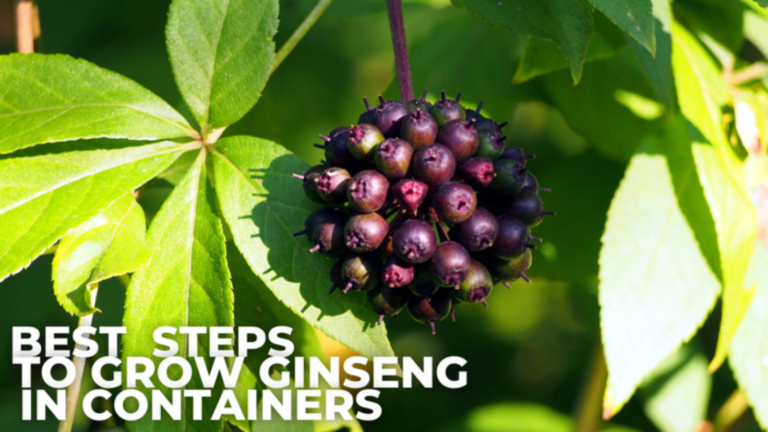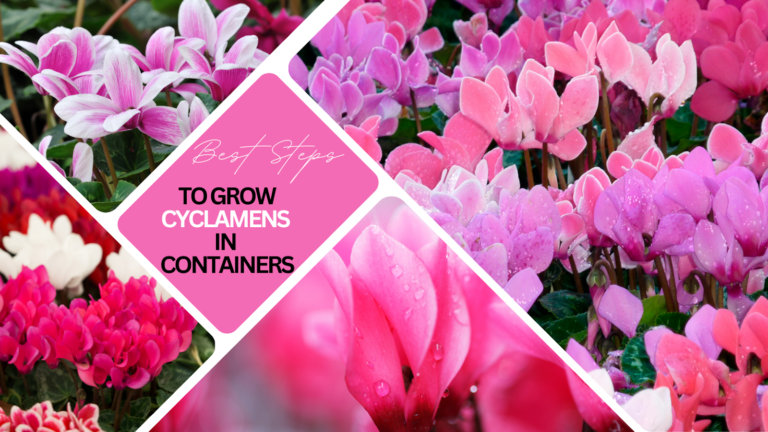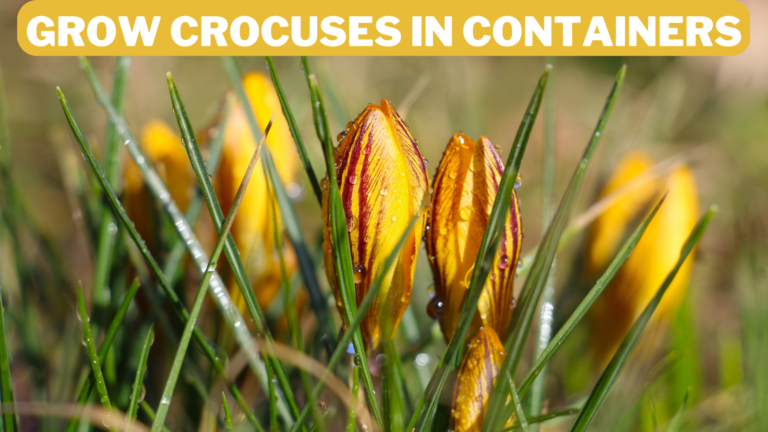Easy Steps To Grow Feverfew In Containers
Easy Steps To Grow Feverfew In Containers
Feverfew (Tanacetum parthenium) is a chrysanthemum grown in herb and medicinal gardens for millennia. The article will help you to learn how to grow feverfew in containers.
History & Origin Of Feverfew
The term feverfew (Chrysanthemum parthenium or Tanacetum parthenium) comes from the Latin word febrifugia, which refers to the herb's function in lowering fever.
This aster family member, a native of Europe, has escaped cultivation and naturalized throughout North and South America.
The plants grow on the sides of roadways and the edges of woodland areas. Other popular names for the plant include wild chamomile, midsummer daisy, feather few, febrifuge plant, featherfoil, and feather few.
Feverfew is a bushy, herbaceous perennial with tall, spherical, and somewhat grooved stems that emerge from a branching, tapering base.
The feathery, fragrant, and bitter-tasting leaves are placed alternately along the length of the multi-branched stem. They have bipinnate, yellow-green leaves with deeply cut, serrated segments.
Flat-topped clusters of flowers bloom in the middle to late summer at the ends of stems that can grow up to three feet tall.
The yellow centers of feverfew blossoms, smaller than daisies and lacking the chamomile's projecting central disk, comprise tightly bunched tubular florets encircled by creamy white rays.
Because of its strong perfume, feverfew doesn't seem to attract bees. In most soil types, the plant self-seeds freely and grows well in either full sun or light shade. Substantial debates exist over the plant's proper genus because it has historically been divided into five groups.
Previous names for the plant include Chrysanthemum parthenium (L. Bernh. ), Leucanthemum parthenium (L. Gren and Gordon), Pyrethrum parthenium (L. Bernh. ), and Matricaria parthenium (L.).
It has additionally been labelled as a Matricaria species. Because it was allegedly used medicinally to save the life of someone who had fallen from the Parthenon during its construction in the fifth century BC, the ancient Greeks named the herb “Parthenium.”
Feverfew was employed as an antipyretic by the Greek physician Dioscorides in the first century. Aspirin from the 18th century, or “medieval aspirin,” was another name for feverfew.
The plant has been employed to treat several ailments throughout Central and South America. The Andean Kallaway Indians prize its use in treating stomach aches, colic, renal pain, and morning sickness. In Costa Rica, the herb is used as a decoction, emmenagogue, cardiotonic, and worm enema.
In Mexico, it is used as a tonic to control menstruation and as an antispasmodic. In Venezuela, it is employed to cure earaches. Two or three leaves, either fresh or dried, are typically taken daily.
Before consumption, the bitterness is frequently sweetened. Due to its potent, lingering scent and the ability to make a tincture from its blossoms, feverfew has also been planted around homes to purify the air.
Health Benefits Of Feverfew (Tanacetum parthenium)
Feverfew leaves contain many distinct compounds, including parthenolide. These substances reduce the body's potential migraine-causing components.
1. Headaches And Migraines
Parthenolide, a rare plant component found in feverfew, is thought to benefit migraineurs by reducing smooth muscle spasms and preventing the enlargement of blood vessels that cause migraines.
Research suggests that feverfew can lessen migraine frequency and symptoms like nausea, vomiting, and light sensitivity, which supports this impact (flashing lights).
2. Menstrual Cramps
When the uterine lining produces an excessive amount of prostaglandins, menstrual cramps develop. Prostaglandins are released during menstruation as these cells disintegrate.
They cause the uterus's blood arteries to tighten and its muscle layer to contract, which results in uncomfortable cramps. Feverfew may help reduce menstrual cramps because it has decreased prostaglandin synthesis.
3. Arthritis
Feverfew has solid anti-inflammatory characteristics that help avoid swelling and damage to the joints despite conflicting evidence regarding its efficacy in treating arthritis.
A pro-inflammatory signalling pathway made up of a collection of proteins known as NFkappaB is mainly linked to arthritis.
Parthenolide, one of the potent sesquiterpene lactones in feverfew, is responsible for the herb's bioactive activities, including its function as an NFkappaB inhibitor.
By suppressing the NF-kappaB activation pathway, the severity of joint erosion can be lessened, and the development of arthritis can be stopped.
Feverfew also functions as an antioxidant, defending bone and cartilage membranes and joint tissues from harm caused by free radicals.
As a result, there is less friction where two bones connect to form a joint, which may help people with arthritis feel better in the long run.
Traditional Use Of Feverfew For Health
The Latin term febrifuge, which means “fever reducer” or “to drive out fevers,” is the root of the English word “feverfew.”
Feverfew has a long history of traditional use. The ancient Greek physician Dioscorides prescribed a decoction of the herb to labouring women to hasten the birthing process by accelerating contractions.
The Romans used it as an emmenagogue to start or augment menstrual flow and to help the placenta expel after difficult deliveries.
It became well-known as a migraine treatment after the Welsh doctor's wife wrote about how she used it to end a 50-year battle with these crippling headaches.
She reportedly used three Feverfew leaves daily for ten months, when her migraines vanished. The scientific community has responded by conducting numerous research on using feverfew as a migraine preventive tool.
Grow Feverfew In Containers
Feverfew is a perennial herb known for easing discomfort associated with inflammation and headaches. It is a miracle herb whose beautiful blossoms resemble white daisies in abundance on a little bush. It's excellent for flower beds, containers, and herb gardens.
1. Choosing A Planting Location For Feverfew
Pick a location with loamy, well-draining soil. Loamy soil consists of sand, silt, and clay. The ideal soil for feverfew will have a similar amount of sand and silt and a lesser amount of clay.
Dig a hole about 12 inches (30 cm) across and 12 inches (30 cm) deep to see how well the soil drains. How long does it take for the water to drain after filling the hole? The drainage is excellent if it clears in 10 minutes or less—poor drainage results from draining for an hour or more.
2. Container Requirements To Grow Feverfew
If you don't want feverfew to spread throughout your garden, plant it in pots. Once established, feverfew spreads swiftly on its own.
If you want more control over it, grow it in pots filled with loamy soil rather than directly in the ground. If you grow feverfew in pots, get some loamy, well-draining potting soil.
For each feverfew plant you want to grow, use pots approximately 12 inches (30 cm) in diameter and 9 to 12 inches (23 to 30 cm) deep.
3. Soil To Grow Feverfew In Containers
If you don't have a location with loamy soil, try plotting and incorporating compost. Till the soil 6 in (15 cm) deep with a garden hoe, then top with 3 in (7.6 cm) of compost.
To make suitable soil for growing feverfew, thoroughly incorporate the compost into the soil using the hoe. It is ideal for preparing a patch of soil in early spring, just before planting the feverfew.
This low-maintenance plant flourishes in many soil types except for hard clay-rich soil. Growing it in loose, nutrient-rich soil drains well is best.
4. Planting Feverfew Seedlings
After the final frost, begin planting feverfew in the early spring. If planted early, feverfew will blossom the first year. Before you plant, be sure there won't be any additional freezing temperatures by checking the forecast to ensure the survival of the seeds or seedlings. Six months old plants with strong roots can withstand the cold.
- Feverfew seeds or seedlings should be spaced 12 inches (30 cm) apart. This is the minimum distance between feverfew plants in all directions.
- To avoid moving your seeds or seedlings later, space them out at this distance from the beginning.
- If you wish to grow feverfew among other plants in a garden bed, pair it with aromatic herbs like mint.
- Avoid growing feverfew next to plants that require bee pollination. The aroma deters bees. Instead, bury the seeds in the ground or create a tiny hole big enough for seedlings.
- With your thumb, firmly press seeds into the soil, then cover them with dirt. A seedling should be placed in a small hole large enough to accommodate its root system before the earth is compacted around its base.
- A garden center will sell feverfew seeds and seedlings.
- If you decide to plant seeds, they will begin to sprout and germinate in about one to two weeks.
5. Sunlight Requirements Of Feverfew
Choose a location that receives six or more hours of sun per day. Plants that grow feverfew prefer a lot of sunlight. If you live in a cold to moderate environment, pick a location that receives full sun for 6 hours daily.
If you live in a scorching climate, pick a location that receives partial shade for up to 3 hours in the afternoon. Extreme cold is unsuitable for feverfew, which thrives in USDA zones 5 through 10.
6. Watering Requirements Of Feverfew
Plants that produce feverfew prefer soil that never entirely dries out. Regular watering is crucial, but over-watering might kill a plant. Winter freezing weather calls for extra caution while watering.
Water the soil frequently to keep it moist but not drenched. Because feverfew dislikes dry or soaking wet soil, it's crucial to maintain moisture without overwatering.
When the soil begins to dry, rinse it evenly with a hose or watering can to re-dampen it. If you live in a scorching area, remember to check on the plants more regularly, at least twice daily.
7. Propagation Of Feverfew
After all the threat of frost has passed, you can straight sow seeds in your garden or start seeds indoors in the late winter. Additionally, you can divide existing plants or transplant seedlings obtained from a garden center.
8. Transplanting Feverfew
After the last frost, transplants can be placed outside in your garden if at least two genuine leaves appear. Plants should be spaced about a foot apart, and holes should be dug as deep as the root ball. Any garden soil will do because feverfew tolerates poor soil. After planting, thoroughly water the area.
9. Fertilizing Feverfew Plants
After the first year, feed the soil lightly with an organic fertilizer each spring. Once your feverfew plants have been established, treat the soil with a balanced organic fertilizer every spring.
Combine fertilizer gently to avoid damaging the root systems. Instead of using a heavy tool like a garden hoe, lightly stir it with your hands or a tiny garden trowel.
If the soil is rich in organic content, fertilizer is unnecessary when feverfew is growing. However, you might use a fertilizer you apply monthly to other flowers.
10. Mulching & Pruning Feverfew
After the plants emerge from their first winter, add a layer of compost to the soil as a mulch. After your feverfew survives its first winter, spread a top layer of organic compost over the soil.
This will give the plants nutrition and help keep the soil hydrated for the upcoming summer. You can purchase organic compost mulch at a garden center or prepare your own.
Prune stems and blooms that are dead or discoloured to promote new development. Trim any stems that appear dead, diseased, or discoloured with garden shears.
Do this after the initial flowering to encourage healthy new growth and blossoms. Feverfew is safe to cut back by up to one-third without harming the plant.
11. Pests & Diseases Of Feverfew
Although this white and yellow beauty is mainly disease-free, you should still be on the lookout for the odd issue.
- Aphids can occasionally afflict Feverfew. If they cause problems, spraying plants with a strong stream of water from the hose usually solves the problem.
- To make a homemade insecticidal soap to spray on foliage whenever you see evidence of aphids, use one tablespoon of pure liquid soap and two tablespoons of cooking oil in a quart of water. This works well for severe infestations.
- Slugs can eat through the leaves. You could see withered vegetation and a sticky residue where slugs had been. They are simple to remove by handpicking around sunset or after a rainstorm.
- Slugs can be repelled by scattering diatomaceous earth or coffee grounds at the base of plants.
- Another issue is aster yellows disease. Aster yellows cannot be treated other than by prevention.
- Use insecticidal soap or diatomaceous earth to eliminate the insects that disperse this bacterial illness. Infected plants must be removed and thrown away.
- Last but not least, powdery mildew can occasionally affect feverfew if grown in a shaded place, but this can be easily prevented by picking a location that receives direct sunlight.
12. Harvesting Feverfew
Many individuals wrongly believe that feverfew is an herb. When in bloom in the summer, it features lovely white petals with a bright yellow core.
Although you may also harvest the feverfew leaves, most people cultivate them for the flowers.
Anytime during the growing season, feverfew leaves can be collected using scissors to separate them from the stem without cutting them.
They can also be harvested by hand, but you must be careful not to injure the plant. If you intend to consume the flowers fresh, they should be harvested when they are slightly more than halfway open.
If you intend to dry the feverfew flowers thoroughly, allow them to open before harvesting. To protect the plant from harm, avoid pulling too firmly.
Make sure to dry dried feverfew flowers as soon as possible. Use them right away, but keep them in an airtight container. Only four months after harvest will you fully profit from the feverfew blossoms?
Feverfew is an excellent herb to have on hand. It is simple to harvest, has few pests and diseases, and is simple to grow. Give feverfew a try, whether you want to use it as a fresh element in your food or for its medicinal properties. It might become a long-term asset to your herb garden.
Possible Side Effects Of Feverfew
With few known side effects, feverfew is typically regarded as being safe. Studies, however, have only examined its immediate effects on the body. They have not researched effects over a longer period of time (more than four months).
In some cases, feverfew may have adverse side effects, such as menstrual changes, nausea, dizziness, heartburn, diarrhea, and constipation.
Pregnant women should not take feverfew as it may trigger early contractions. Furthermore, insufficient research has been done to determine whether it is safe for nursing mothers.
People allergic to ragweed or other members of the Asteraceae or Compositae plant family, such as daisies, marigolds, and chrysanthemums, should also avoid it.
Conclusion
However, current research indicates it is only marginally more efficient than a placebo. More human studies are needed.
Its painkilling, anticancer, mood-enhancing, rosacea, and acne reduction properties are also connected to feverfew. Although most people find this supplement safe, it is best to talk to your doctor first if you have any concerns. Don’t miss adding the herb to your small spaces.
I trust you enjoyed this article on the Easy Steps To Grow Feverfew In Containers. Please stay tuned for more blog posts soon. Take care!
JeannetteZ
>>>Please click here to read my all-inclusive article about Container Gardening<<<
>>>Are you interested in homegrown herbs and medicine? Please click here to find out more about it!<<<
Your Opinion Is Important To Me
Do you have thoughts, ideas, or questions? I would love to hear from you. Please leave me your questions, experiences, and remarks about this article on the Easy Steps to Grow Feverfew in Containers in the comments section below. You can also reach me by email at Jeannette@Close-To-Nature.org.
Disclosure
This post may contain affiliate links. As an Amazon Associate and other affiliate programs, I earn from qualifying purchases at no extra cost to you. Read my full affiliate disclosure.
You might also enjoy these blog posts:
Easy Steps To Grow Ginkgo In Containers
15 Best Essential Oils For Natural Healing
30 Powerful Fruits And Vegetables With Healing Powers
Easy Steps To Grow Sunflowers In Containers
Easy Steps To Grow Echinacea In Containers




















